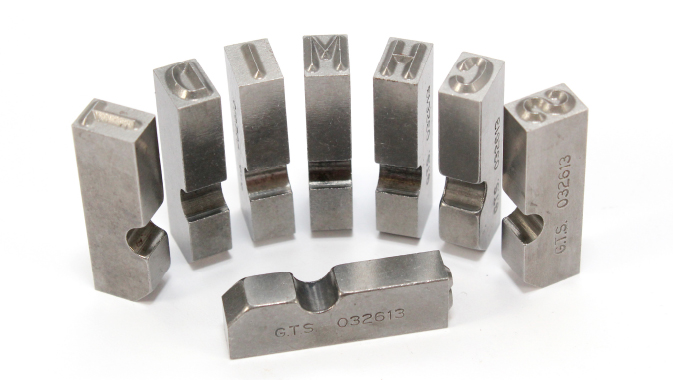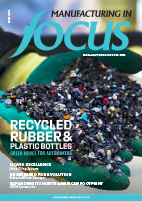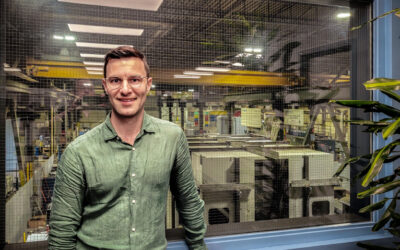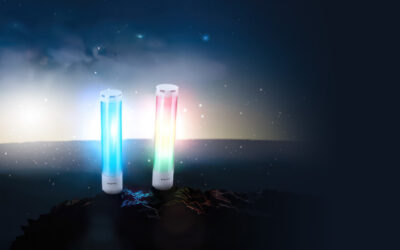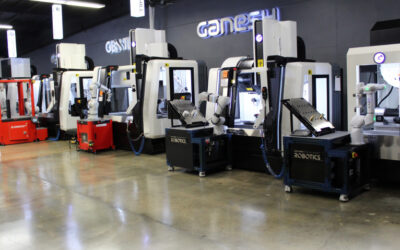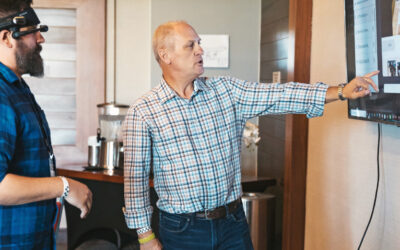SCHMIDT is a manufacturer of marking systems and marking equipment to provide identification and traceability for parts, products, and containers of all kinds of materials. This marking company serves customers in industries including aerospace, automotive, medical devices, oil and gas, heavy construction, electronics, firearms, packaging, energy, wind power, semiconductors, livestock and pet ID tags.
~
Companies need to be able to identify a product. Serial numbers, date codes, and part numbers are necessary within companies but are also crucial when products are shipped to customers or when replacement parts are ordered. “We’re application people, and we provide equipment that an end user will use to identify their products or mark their products,” says Dave LaCosse, vice president of sales and marketing at SCHMIDT.
Marking and identifying a product is a part of the finishing process, and SCHMIDT provides different ways of accomplishing that. “We have standard product just like anybody does, but we also provide engineering solutions if it requires anything more than a simple process of placing a part under a machine and pressing a button to mark a part,” says Dave. The company offers a variety of marking solutions. For example, the product may need some handling, or it may need new software, or it may need to be automatically fed into the marking system.
The genesis of the company goes all the way back to 1895 when it was founded as a family business by George. T. Schmidt. The business began with simple identification, and at that time, manual tools such as steel hand stamps and dies were used to mark products. The industry has evolved over the years into machinery, automated equipment, and laser marking as newer technologies emerged. By the 1970s, the company was no longer family-owned and had become a part of a larger Fortune 500 company called Illinois Tool Works Inc. (ITW).
Its facility in Niles, Illinois employs approximately fifty-five people. The relatively small company can react quickly and get work done at a fast pace in the open and welcoming environment. “While everybody has a specific role, you can be involved in all aspects of the business, whether you’re a part of the sales group, the engineering group, the service group, or the manufacturing group,” says Dave.
This privately-held company makes roughly fifteen million dollars in sales per year. The bulk of its sales are in North America, and it is working out some distribution deals to create new opportunities to sell overseas.
SCHMIDT is already growing at a steady pace, and it plans to double the size of the company in the next five years by adding new products and spreading its territory. “We’ve had a change in our group in the past year and a half, where the sales had gotten a little flat and stagnant, so we’re trying to bring in some new things to help grow the business and also expand our reach,” says Dave.
One of the ways the company plans to do this is by contracting with some full-service large industrial equipment distributors that have a larger influence and will work well with its regional field sales managers. The company’s growth had previously always relied on repeat business and referrals, and today it is looking to expand its customer base and its opportunities to experience more significant growth.
The professionals at SCHMIDT have strong technical backgrounds and extensive experience in understanding customer requirements. They form relationships with customers by delivering unique follow-up services. “Once we get the order, we don’t forget about you. We provide you with training, service and maintenance, and technical support as well as follow-up. A lot of our business is based on repeat business,” says Dave.
There are three primary ways of marking products: the traditional method, pin marking, and laser. “For many years, traditional was the majority; it was done with pressure and with hydraulic and pneumatic roll marking and press marking machines, where you’d literally put tons of force to stamp letters and numbers into a product. That’s still done today, but not to the degree that it used to be,” says Dave. This method is no longer very popular due to the amount of consumable products that are used in the process. The marking tools wear out from all the force that is used.
The industry moved to using pin markers, which are very flexible and give more marking options. The machine is driven by a computer program and uses a carbide pin to etch whatever character size is chosen into the material. It has a few drawbacks including the look of it and the loud noise that is a part of the process.
Dot peen pin marking systems, in which a pneumatically-driven pin makes a series of dots to form a character, make up the largest proportion of products at SCHMIDT overall, yet the laser is its fastest-growing product line. “Laser is starting to take over as it’s a bit cleaner looking and does not have the noise that’s involved, but pin marking is still a very valuable technology, and it is still used quite a bit today,” says Dave.
SCHMIDT has heavily targeted the medical industry with the laser marking systems because the amount of equipment required to support the medical field continues to grow rapidly. It is expanding its laser product line with the latest in marking technologies.
Fiber lasers are a modern development that came out of the fiber optic industry. When the company began selling lasers, it used YAG lasers that go through a crystal to generate a lot of heat. However, the YAG lasers were fairly expensive to use and required heavy maintenance. A number of years ago, the fiber industry developed the fiber laser, which is a much simpler and smaller tool that runs through a fiber medium versus a crystal.
Its increased efficiency brought the price of the laser down and changed the product marking industry. “Laser marking went from being a much more expensive way of doing things to a much more manageable way and a more economical way of marking products,” says Dave.
SCHMIDT has a new product that fits outside of the three primary marking product categories. It is a flexible, handheld inkjet printer called the Markjet 2600 that is used for larger sized marking, typically from a half-inch-sized character up to a two-inch one. The ink is not completely permanent, which is ideal for certain niche markets where customers do not want to displace the material that is being marked. When working with a traditional roll marker, a pin marker or a laser, the material has to be moved in some way, whereas the inkjet printer simply spreads a quick drying ink on the material.
The response times have shortened in the past few years in the industry. A four-to-six-week lead time used to be normal, but today, there are customers looking for products within a day of ordering. SCHMIDT has taken on a Kanban method approach to ensure delivery while not overburdening the production team. “We’re keeping certain high-demand products on the shelf so we can turn things around more quickly,” says Dave.
The industry has become much more competitive as the technology improves and new players join the field. SCHMIDT is always competing with the markets overseas that are able to produce lower-end marking systems at a lower cost. It reacts by reducing its cost as much as possible without compromising quality, improving its processes, and getting to the market faster. It is an ever-changing market, and that is why SCHMIDT strives to remain diversified to supply a variety of industries.
It is very rare for any company to send a product out without any identification, even if it is just to identify what it is and who made it. This opens SCHMIDT up to many markets, and it currently works with approximately thirty industries. “For example, the oil and gas industry, a few years ago, was very strong, and you can get a little bit heavy in that area, but that can be a boom or bust industry, and then all of a sudden the price of oil drops, and things slow down. You can’t be tied to one industry,” Dave explains. Different areas of the United States have certain industries that are stronger than others, so SCHMIDT makes sure to cover a wide range of sectors.
The mission of SCHMIDT is to produce the highest quality product and give its customers the highest level of service. The future of the company looks exciting as it prepares to double its size in five years and add many new products to its lineup.
It is also looking forward to expanding its sales network into Europe and Asia. “In order to grow the business, we can’t just stay here. We’re going to expand by adding new products in new markets and new geographies,” says Dave.

